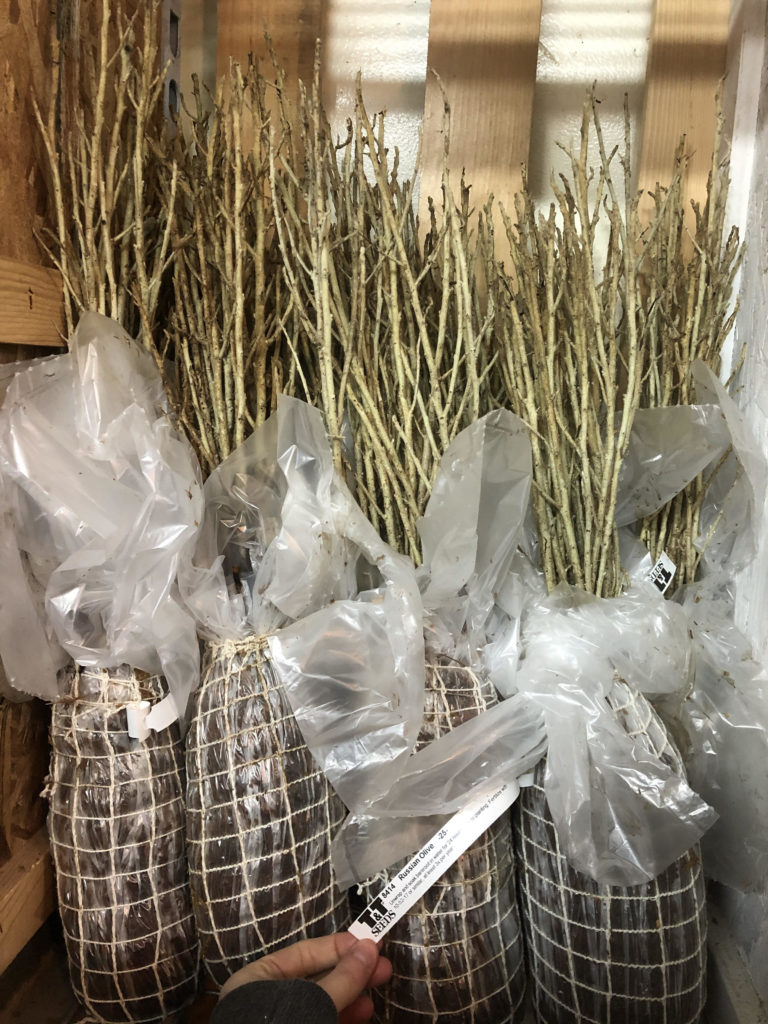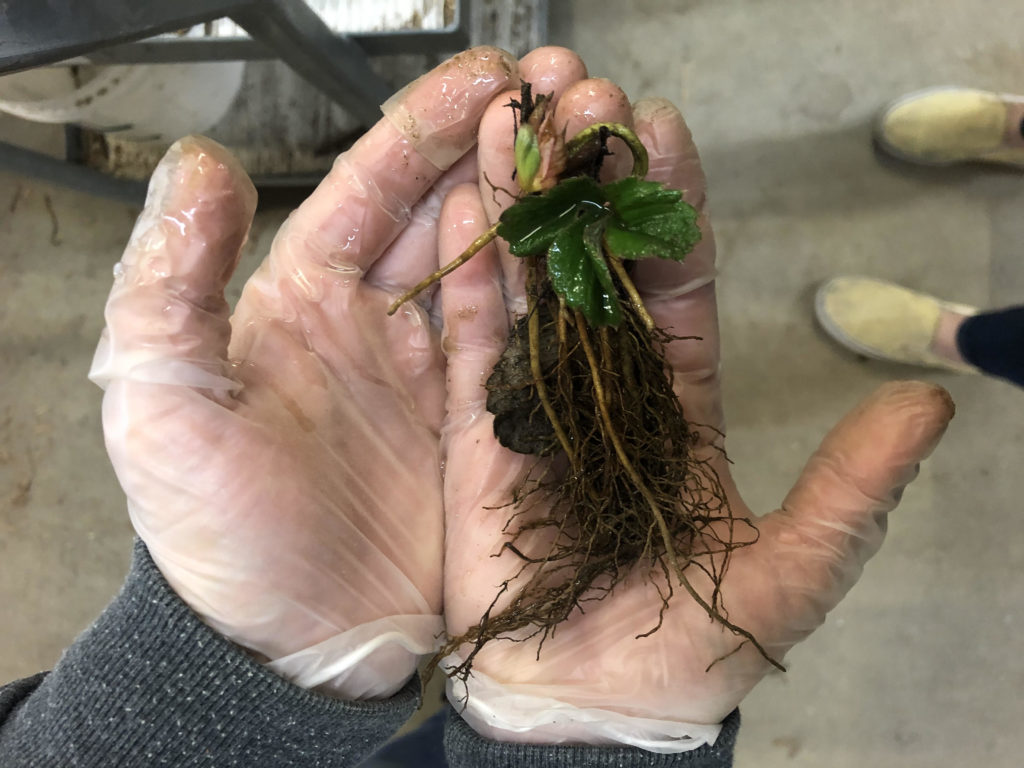What is root stock?? Root stock is a section of a plant, often retrieved from underground, that has been put into dormancy and will produce new growth once planted. We purchase our dormant stock from all over the world. All the stock is shipped into our Headingley warehouse, packed and stored at controlled temperatures. This ensures the stock is kept dormant and fresh, right until we ship your order. We buy stock that is hardy to zones 2 and 3.
What is dormancy?? A plant, bud, or seed that is “dormant” is not actively growing. It is in a waiting state until conditions are right for active growth. Often when a plant is dormant it looks dead, but it is alive. If you were to cut into it, you would find at least a small amount of living green tissue, called the cambium. Dormant stock comes in a wide range of shapes, sizes, and varies in appearance at time of shipping. The products you receive may range from as small as a few inches up to four feet.

This is a photo of Russian Olives in our cooler waiting to be shipped.
As you can see, there is no leaves, or buds.
If you prune back the branch by a few inches, the cambium will be visible.

This is a photo of a strawberry root. It does not have a cambium, but as you can see the roots are thick and very healthy!
Often, due to being in a dark box during shipping, the leaves may lose their color or turn brown due to being unable to photosynthesize during transport.
Once they are planted they will produce fresh leaves and begin to shoot runners once rooted in to the soil where you plant them.
Why do I need to prune my rootstock?
Plant energy flows bi-directionally, much like blood in the human body. Upon receipt, the tree should be pruned back by 1/3 to push energy back down into the roots. The roots are small compared to the area they are being planted in, so a smaller tree puts the roots and plant at balance to use energy for new growth.
Fertilizing?
Rootstock MUST be fertilized once every two weeks from planting until mid-late August. This is a crucial step in ensuring the plant will break dormancy. We recommend using a high phosphorus fertilizer (ex: 10-52-17) to help encourage root and bud development. It is important to stop fertilizing towards the end of the summer to encourage the plant to enter back into dormancy to survive the winter.
How to plant?
To prepare your bare root plant for planting, you first need to prune back by 1/3. If you do not see the cambium when you cut, cut back a bit farther until you do.
If the plants come in soil, they are ready to be planted after pruning. If the plants come in mulch/shavings, they need to be soaked. Rehydrate the roots by soaking in a pail of water for several hours or overnight. We recommend 24 hours. During the soaking process, most dormant stock starts to bud out. Sometimes they don’t bud until planted. Every plant is different!
To plant, dig a hole that is shallow and tapered: make it deep enough to accommodate the height of the root system and plant so that the existing soil line is planted below the soil. This gives roots plenty of room to grow outwards. Use a spade to break up any compacted soil and loosen the soil on the sides and bottom, then throw in several shovelfuls compost, fill the hole with water and allow to drain.
Position the plant upright, if there are any crooks, or the stalk is crooked, plant it so that it is upright, it is ok for the root ball to be sideways in the hole. Gently backfill in the hole with loose soil or a blend of compost mixed with soil. Steady the plant with one hand, then use your hands or feet to gently firm in the soil and stabilize the plant. Water thoroughly to remove any air pockets and settle the soil around the roots.
Spread a two- to three-inch layer of mulch around the plant to help retain moisture, moderate soil temperatures, prevent weeds, and protect its roots.
Be sure to read our post about preparing your new trees for winter!
We also have a post about the different types of perishables!

